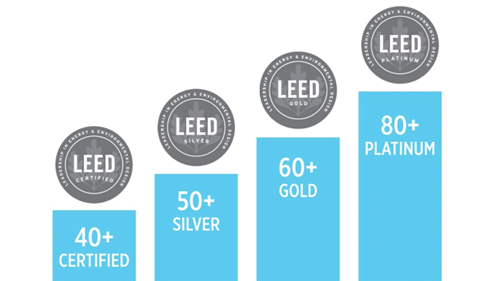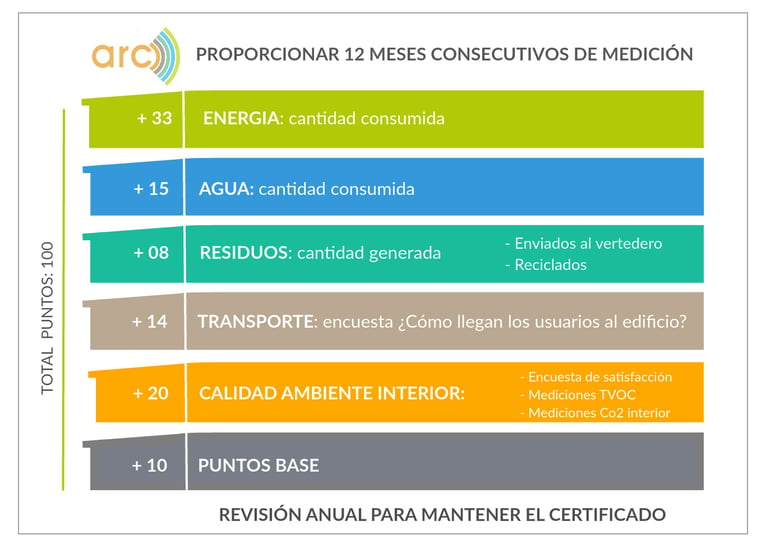The ARC system, based on the performance of existing buildings, allows for the obtaining of LEED O&M certification by demonstrating that the good operation and maintenance of buildings is the most sustainable alternative compared to the construction of a new building.
What are the benefits?
It is estimated that it takes 80 years to reverse the effects on climate change caused by demolishing and constructing a building anew. Therefore, applying the concepts of sustainable architecture and engineering to building management brings economic prosperity, comfort, and a reduction in the building's ecological impact, measured in terms of CO2 emissions and water use.
LEED v4.1 (ARC) is a step forward in the LEED certification system. It focuses on the development of a transparent and user-friendly platform that allows for a deep dive into the features that make a building high-performing in terms of energy efficiency: water efficiency, waste management, transport and experience.
Results-oriented approach
It has been decided to measure a series of objective parameters related to the performance of the building through surveys or measurements. This results-oriented approach leaves it up to the Administrators to decide which specific actions they should take to improve its performance.
In other words, existing buildings gain points not by simply implementing strategies, but by improving performance.
How does it work?
- 7 Prerequisites for Best Practices: Based on the policies of the building Administration.
- 5 Performance Prerequisites: Points are awarded when the minimum required thresholds are exceeded: transportation efficiency, water use efficiency, energy efficiency, waste management efficiency, and indoor environmental quality efficiency.
- 10 Strategy Points: a basis for implementing LEED strategies. These strategies are the same as those followed through the “traditional” LEED credits. These credits are optional.
- 90 Performance points by categories: They are obtained automatically by comparing the results obtained in each category by the building with respect to other similar buildings around the world.
What does it take into account?
The 5 categories have a different impact on the 90 points depending on their impact on the environment.
The most important category is energy efficiency. The information required to obtain the score in each of the categories is as follows:
- Energy: provide 12 consecutive months of energy consumption measurement.
- Water: provide 12 consecutive months of water use metering.
- Waste: provide 12 consecutive months of measurement of waste generated, differentiating between waste that was sent to landfill and waste that was recycled.
- Transport: a survey to assess which means of transport users use to get to the building.
- Indoor climate quality: a user satisfaction survey and a series of TVOC and CO2 measurements inside the building.
What results are obtained?
The certification levels, according to the points obtained in the measurement, are as follows:

After the review by the GBCI, the building receives a score and an initial certification level. The project continues to report performance data and must undergo a review at least annually to maintain its certificate. The score and the certification level will be reflected on an annual basis.
What new features does it have compared to previous versions?
In LEED v4.1, the vast majority of credits that previously awarded points have disappeared, replaced by a new measurement system based on the building's performance. Resulting in a smaller amount of documentation to be sent to the certifier (GBCI). Any project can implement this new certification tool and start measuring the results that will be reflected in the measurements taken on the building.



